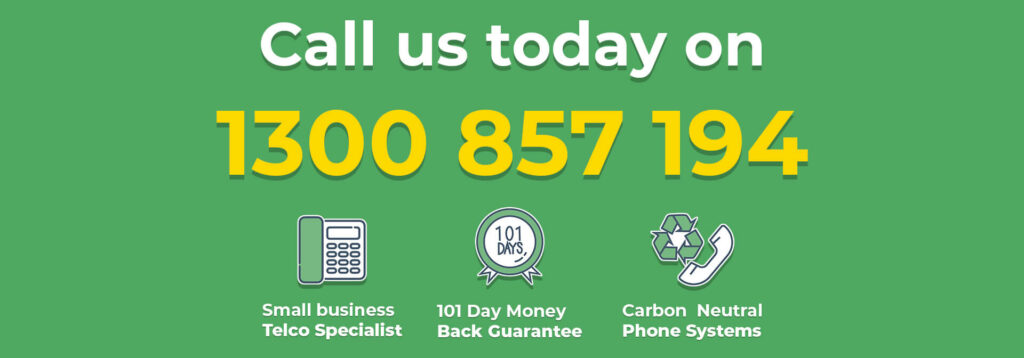Top 10 Call Retention Best Practices
Filed under: Blog

What is call retention?
Call retention is the ability to keep customers engaged over the phone and interested in your business, and by doing so, encouraging them to continue calling your company for their business or personal needs. Call retention is an extremely important metric for businesses, especially for customer facing departments, such as call centres, sales and customer service. That is because a businesses’ call retention rate has a direct impact on customer loyalty and overall company revenue. If your business has a high call retention rate then that shows that customers are happy and satisfied with the products or services you offer them and the customer service they receive from you. And if customers are happy with you they are much more likely to stick around and even refer your business to others. On the other hand, a low call retention rate suggests that customers are not satisfied with your offerings or customer service, and are therefore more likely to leave and check out the competition. By implementing the following strategies to improve call retention, businesses can avoid customer churn and instead build long-lasting and profitable relationships with their customers and improve their bottom line.

Play music to entertain callers waiting on hold
According to a recent study conducted in Europe, customers left on hold for 30 seconds without any music thought the wait was 90 seconds long, while customers who listened to music for the same duration thought the wait was only 15 seconds long. The conclusions are clear: if you place customers on hold, it’s much more enticing to play music in the background. Alternatively, upload or record a custom message to offer information about your product or service while you have callers on the line. This turns otherwise wasted time into a valuable advertising opportunity with a captive audience!
Ring multiple employees simultaneously to answer calls sooner
Perhaps you’re busy on a call, but other members of your department are available to take the call for you. Ring groups enable these team-wide calling strategies. Ring groups direct calls to multiple people rather than a single phone. This setup ensures that calls are answered not based on any single employee’s availability, but rather on the availability of the group. Ring groups reduce waiting times for customers by notifying more people of incoming calls. In a simultaneous call group, all members in the group are notified at once, giving anyone the chance to pick up the phone. When using “call-flow” within a group, members are called in a specified order, with each caller given a set window of time to answer the call before it moves on to the next phone. If nobody answers the call, calls can be configured to fail over to an external cell phone, voicemail box, or revert back to an automated menu.
Route calls more efficiently by queuing customers
Queues are configured to automatically distribute calls so that the caller who has waited the longest is matched with the next agent who becomes available. This matches callers with agents in the most efficient manner possible, thus minimizing wait times. Queues eliminate the need for a receptionist to route calls, saving your business money, and preventing human error from losing track of what call came in first. Queues can also have rules such as maximum wait time so during busy hours, callers are immediately routed to voicemail or a secondary line, instead of being put on hold indefinitely. Queues can also play Music on Hold to keep callers occupied as they wait for service. Queues are great additions for departments that receive many inbound calls, such as customer support teams.
Encourage callers to leave a voicemail for urgent issues
If you know it’s going to take a long time to answer calls, you can always have the incoming callers fail over to voicemail, instead of making them wait indefinitely on hold. If this is your strategy, make sure to record a voicemail greeting that’s professional and courteous. You might also want to give the caller an email (or some alternative contact information) so they can get in touch with you through a different channel.

Offer a call-back option for customers who don’t want to wait on hold
Let’s face it, nobody likes to be put on hold, especially for a long time. Offering customers an option to leave their phone number and request a call back is a great way to alleviate the frustration felt by customers being put on hold. By offering a call-back option, customers can leave their phone number and request a call back when an agent becomes available. This allows customers to go about their day without having to wait on hold, and it also allows your business to call them back at a time that is convenient for them, rather than having them wait on hold.
Use a virtual receptionist to handle calls during off-hours
A virtual receptionist is a great way to help handle calls that happen after business hours, such as on weekends. Virtual receptionists can be programmed to leave voice messages and provide basic company information such as business hours so callers know when they can call back to speak to someone. This gives your business a chance to provide customer service even outside of business hours without needing to have a 24/7 call staff handling the phones.
Offer a self-service option through IVR (Interactive voice response)
No doubt you would have encountered an interactive voice response system over the phone before. These are when callers can interact with a computer over the phone via voice prompts and reply by inputting numbers into the keypad. These systems allow callers to navigate through a menu to reach the appropriate department they are after or find out specific information that they are calling about. An interactive voice response system can help to reduce wait times for callers and also to increase the efficiency of your customer service operations.
Use call tracking to monitor customer service performance
Call tracking allows you to monitor the performance of your customer service team. You can track metrics such as call volume, average call length, and call abandonment rate. This can help you to identify issues with your customer service operations and make improvements.
Train your agents to handle calls professionally
Properly training your customer service agents is essential to retaining customers on the phone. Agents should be trained to handle calls professionally, with a friendly and helpful attitude. They should be trained on how to handle difficult customers, and how to handle different types of calls, such as technical support or sales calls.
Regularly review customer feedback and complaints
Regularly reviewing customer feedback and complaints can help you to identify issues with your customer service operations, and make improvements. Reviewing feedback can help you to identify patterns in customer complaints, and take steps to address the underlying issues. This can help to improve customer satisfaction, and ultimately retain more customers in the long run.

Closing Tips on Call Retention
In conclusion, retaining customers on the phone is crucial for any business that relies on inbound calls. By implementing strategies such as playing music on hold, ringing multiple employees simultaneously, routing calls efficiently, encouraging callers to leave voicemails, offering call-back options, using virtual receptionists, offering self-service options through IVR, tracking calls, training agents and regularly reviewing customer feedback, businesses can improve their customer service operations and ultimately retain more customers. These strategies can help reduce wait times, increase efficiency, and improve the overall customer experience. By paying attention to these tips, businesses can ensure that they are providing the best possible service to their customers and can ultimately increase customer satisfaction and retention.
Improve Your Call Retention Today With SpringCom!
Improving your call retention starts with a great phone system backed by a support team that understands small business inside and out. Call SpringCom on 1300 857 194 and our small business phone experts will talk you through everything you need to know. As Australia’s leading small business phone system provider, SpringCom specialises in helping small businesses grow and succeed. Call SpringCom today and let us help you with all your business phone needs.


 Enquire About A New Phone System Before 5pm, 31st of May & Receive up to 12 Months FREE Data Protection With Your New Phone System*
Enquire About A New Phone System Before 5pm, 31st of May & Receive up to 12 Months FREE Data Protection With Your New Phone System*